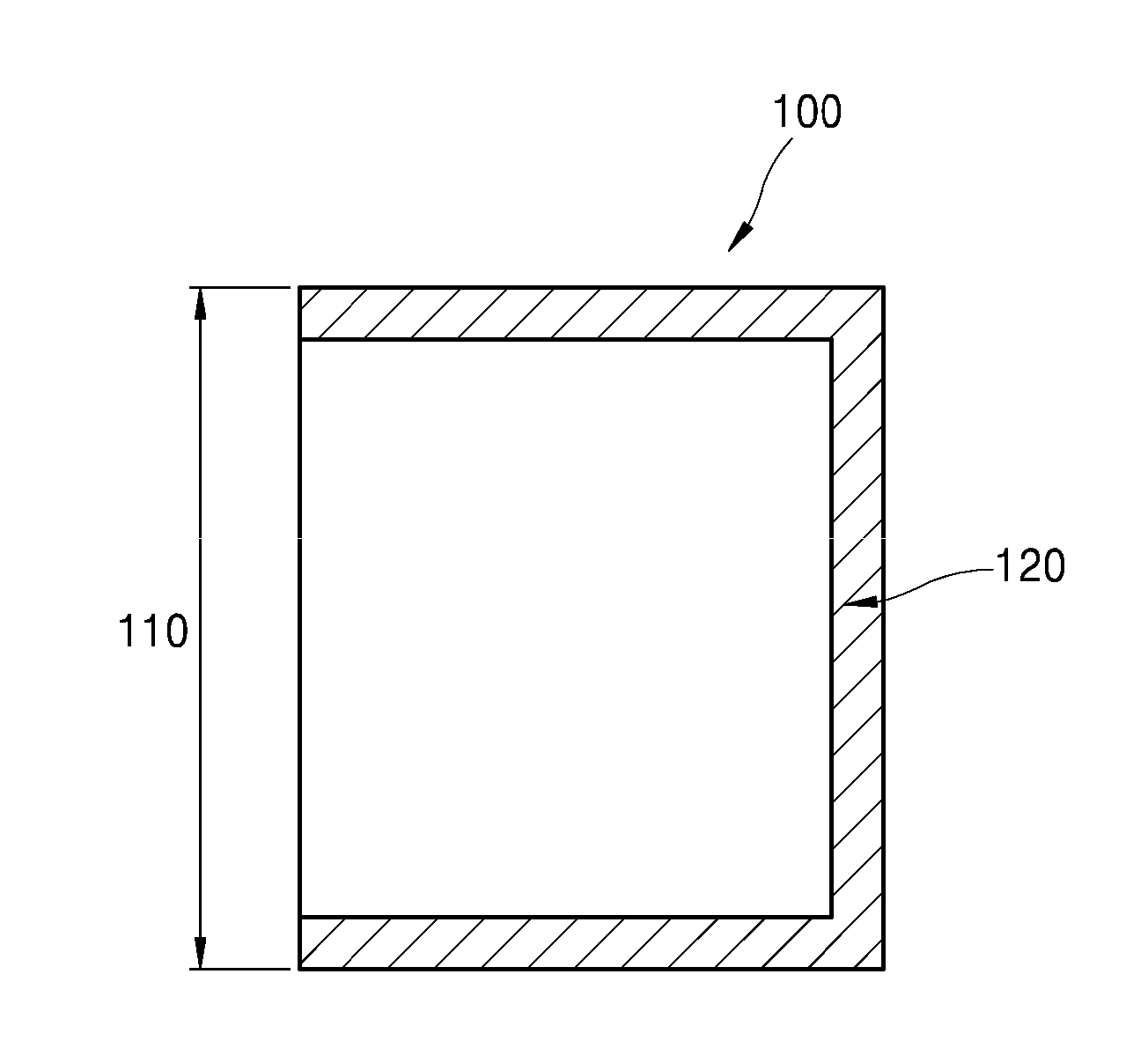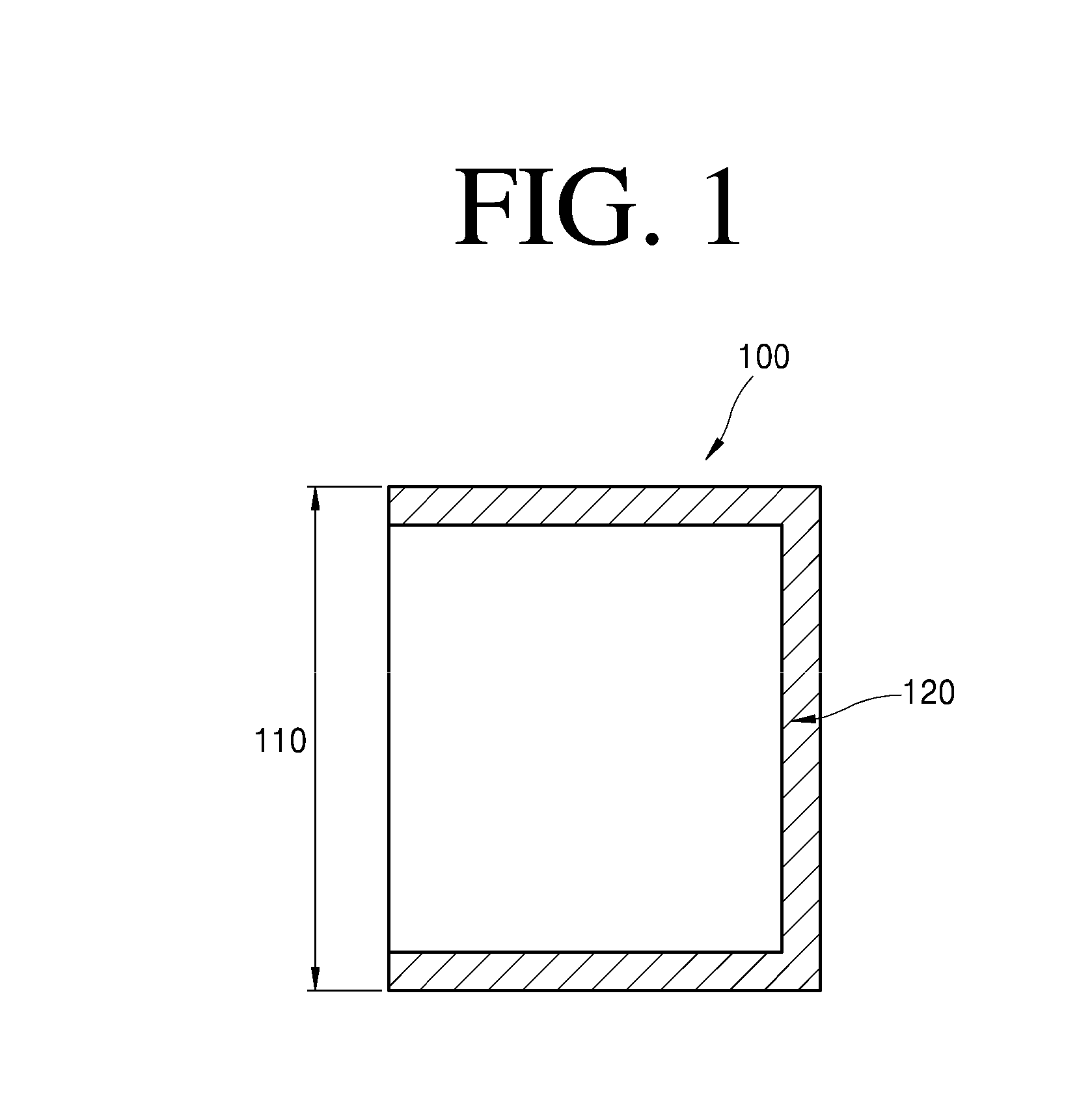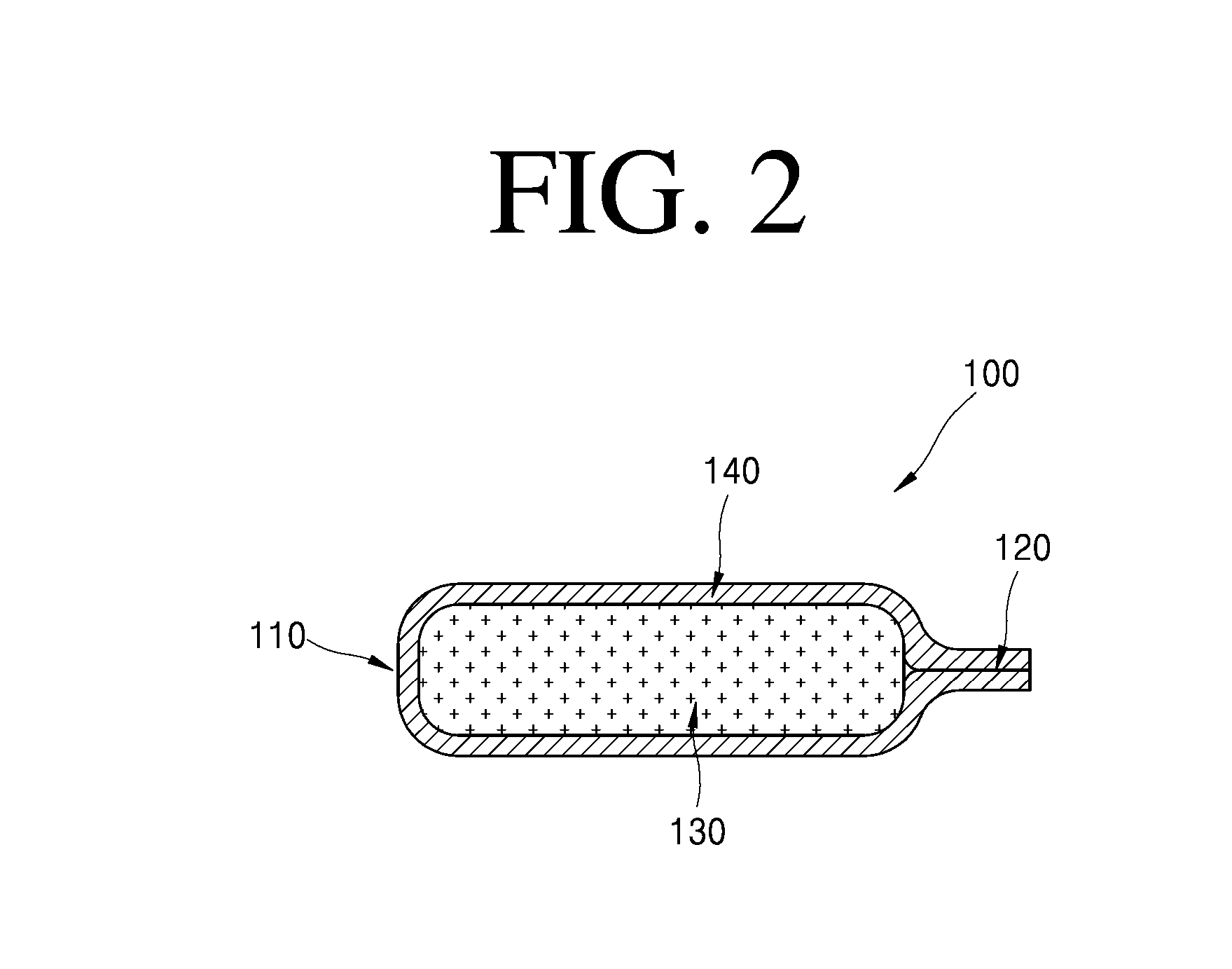Vacuum insulation panel and method for manufacturing the same
a technology of vacuum insulation panel and vacuum insulation panel, which is applied in the field of vacuum insulation panel, can solve the problems of reducing the degree of vacuum increasing the pressure inside reducing the lifespan so as to reduce the heat-bridge effect of the vacuum insulation panel, excellent insulating properties, and long-term durability
- Summary
- Abstract
- Description
- Claims
- Application Information
AI Technical Summary
Benefits of technology
Problems solved by technology
Method used
Image
Examples
embodiment
[0089]
[0090]A glass fiber having an average diameter of 4 μm was dispersed in a water glass (binder), to produce sheets of glass fiber board, thickness of each sheet being equal to 1 mm. The thirty sheets of the glass fiber board were stacked on one another, and were decompressed to reduce the thickness to 5%, to produce the core.
[0091]
[0092]A multi-layer film was formed as an outer skin material by sequentially laminating, from the outside, a polyethylene terephthalate (PET) film having a thickness of 12 μm, a nylon film having a thickness of 25 μm, an aluminum foil having a thickness of 7 μm, and a linear low density poly ethylene (LLDPE) film having a thickness of 50 μm by using a polyurethane-based adhesive.
[0093]Alternatively, a multi-layer film was formed as an outer skin material by sequentially laminating, from the outside, two sheets of PET film (a total thickness of 12 μm), a poly vinyl alcohol (PVOH) film (a thickness of 15 μm), and a cast poly propylene (CPP) film (a thi...
experimental example 1
Measurement Values of Thermal Conductivity Increasing Rates for Evaluating Improvement of Long-Term Durability
[0101]The thermal conductivities in mW / mK of center portions of the vacuum insulating panels of the embodiment and Comparative Example were measured at every 15 days interval, with the vacuum insulating panels of the embodiment and Comparative Example put in a chamber at a temperature of 70° C. and a relative humidity of 90%.
[0102]The center portion is defined as an area having a size of 75×75 mm located in the center of the vacuum insulation panel having a size of 190×250 memory. The center portion has four side surfaces parallel to the respective side surfaces of the cross section of the vacuum insulation panel.
[0103]A thermal conductivity measurement sensor was located at the center portion. Thermal conductivities of the vacuum insulation panels of the embodiment and Comparative Example were measured with the sensor.
[0104]Thermal conductivity increasing rates in % were ca...
experimental example 2
Measurement Values of Thermal Conductivities for Evaluating Improvement of Insulating Properties
[0109]A thermal conductivity of the vacuum insulation panel according to the embodiment was measured at every 1 cm on the straight line from the center portion to the bending portion. A thermal conductivity of the vacuum insulation panel according to the Comparative Example was measured at every 1 cm on the straight line from the center portion to the side surface corresponding to the bending portion. The measured results were shown in Table 2 below. The center portion has already been described above.
TABLE 2Distance from CenterThermal Conductivity [mW / mK]Portion [cm]EmbodimentComparative Example03.633.8113.693.8523.804.0234.124.5044.965.3857.218.15615.4418.22
[0110]In the conventional vacuum insulation panel, the sealing portions formed at the four side surfaces are exposed to the outside. Hence, external moisture and gas permeate through the sealing portions, and therefore, the thermal c...
PUM
| Property | Measurement | Unit |
|---|---|---|
| Pressure | aaaaa | aaaaa |
| Pressure | aaaaa | aaaaa |
| Density | aaaaa | aaaaa |
Abstract
Description
Claims
Application Information
 Login to View More
Login to View More - R&D
- Intellectual Property
- Life Sciences
- Materials
- Tech Scout
- Unparalleled Data Quality
- Higher Quality Content
- 60% Fewer Hallucinations
Browse by: Latest US Patents, China's latest patents, Technical Efficacy Thesaurus, Application Domain, Technology Topic, Popular Technical Reports.
© 2025 PatSnap. All rights reserved.Legal|Privacy policy|Modern Slavery Act Transparency Statement|Sitemap|About US| Contact US: help@patsnap.com



